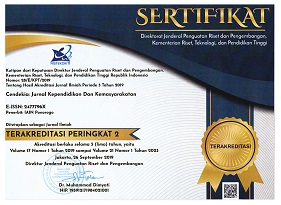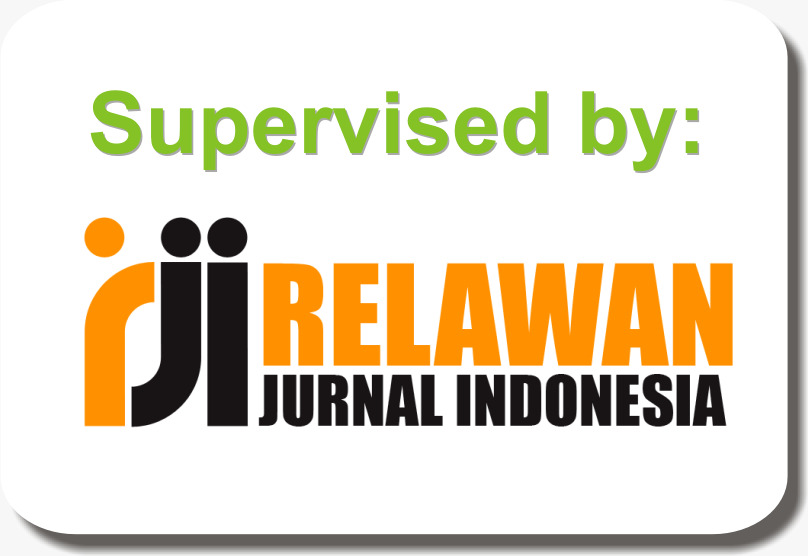The Impact of Social Media on the Formation of Religious Patterns Among Millennial Students in Ponorogo
DOI:
https://doi.org/10.21154/cendekia.v22i2.9870Keywords:
Millennial Generation, YouTube, Religious BehaviorAbstract
This study investigates the impact of social media, specifically YouTube, on the religious practices of millennial students in Ponorogo. The increasing reliance of millennials on YouTube as a primary source of religious content indicates a shift from traditional religious education to digital platforms, driven by YouTube’s diverse content offerings. The research aims to explore this phenomenon by employing a qualitative approach with a descriptive-analytical method. Using the Technology Acceptance Model (TAM), the study examines the factors influencing the acceptance and use of YouTube for religious learning. At the same time, Social Construction Theory was applied to understand how social interactions and media influence students' religious practices. The findings reveal that YouTube facilitates religious engagement without time or location limitations, offering a flexible, innovative platform for spreading religious messages. Millennial students in Ponorogo construct their religious practices through externalization, objectivation, and internalization, with YouTube as a central medium. This study presents new insights into the shift in religious patterns among millennials, where YouTube content broadens their religious understanding and influences beliefs, encompassing both moderate and conservative perspectives.
References
Agung, Winantu Kurnianingtyas Sri. “Case Study: The Optimization of the Functions of Islamic Religious Education in Ponorogo,” 169–74. Atlantis Press, 2018.
Al-Adwan, Ahmad Samed, Na Li, Amer Al-Adwan, Ghazanfar Ali Abbasi, Nour Awni Albelbisi, and Akhmad Habibi. “Extending the Technology Acceptance Model (TAM) to Predict University Students’ Intentions to Use Metaverse-Based Learning Platforms.” Education and Information Technologies, 2023, 1–33.
Atamimi, Abdul Basit, Abdul Muaz, and Afni Handayani. “Hijrah in the Sufisme Perspective: Study of Religious Phenomenology on the Role and Activities of Da’wah of Youth Hijrah in Cirebon.” JOUSIP: Journal of Sufism and Psychotherapy 4, no. 1 (2024): 1–24.
Aulita, Dea, Fadila Nurazizah, Lulu Meilinda, and Derry Nugraha. “Social Media As Source Study Generation Millennials.” Journal of Economics and Economic Education 1, no. 1 (2024): 36–40.
Berger, Peter L. The Sacred Canopy: Elements of a Sociological Theory of Religion. New York: Open Road Media, 2011.
Berger, Peter L, and Thomas Luckmann. The Social Construction of Reality: A Treatise in the Sociology of Knowledge. USA: Anchor, 1967.
Buf, Diana-Maria, and Oana Ștefăniță. “Uses and Gratifications of YouTube: A Comparative Analysis of Users and Content Creators.” Romanian Journal of Communication and Public Relations 22, no. 2 (2020): 75–89.
Burgess, Jean, and Joshua Green. YouTube: Online Video and Participatory Culture. New Jersey: John Wiley & Sons, 2018.
Campbell, Heidi A., and Giulia Evolvi. “Contextualizing Current Digital Religion Research on Emerging Technologies.” Human Behavior and Emerging Technologies 2, no. 1 (2020): 5–17.
Davis, Caitlyn. “YouTube’s Flat-Earth Discourse Community.” Lucerna Undergraduate Research Journal, 2024, 118.
Demir, Zekiye, and A. Ömer Toprak. “Changes in Religious Attitudes and Behaviors of Euro-Turk Students with Theology Education.” Teaching Theology & Religion 26, no. 1 (March 1, 2023): 29–43.
Dewi, Oki Setianad, and Ahmad Khoirul Fata. “Salafi Da’wah Among Hijrah Celebrities.” Penamas 36, no. 2 (2023): 180–98.
Dubovi, Ilana, and Iris Tabak. “An Empirical Analysis of Knowledge Co-Construction in YouTube Comments.” Computers & Education 156 (2020): 103939.
Fitriawan, Fuad. “Peran Kiai Muhammad Hasan Dalam Proses Penyebaran Agama Islam Di Desa Karanggebang.” Dialogia 15, no. 2 (2017): 309–32.
Gao, Quan, Orlando Woods, Lily Kong, and Siew Ying Shee. “Lived Religion in a Digital Age: Technology, Affect and the Pervasive Space-Times of ‘New’Religious Praxis.” Social & Cultural Geography, 2022, 1–20.
Hamidah, Tutik. “An Analysis of The Contents of Da’wah Attaki in You Tube Media with The Title of’The Most Beautiful Love" in The Perspective of Religious Moderation.” In The 1st International Conference on Engineering, Technology and Social Science, 29–33, 2020.
Henry, Andrew M. “Religious Literacy in Social Media: A Need for Strategic Amplification.” Religion & Education 48, no. 1 (2021): 89–101.
Huang, Zhewen. “Engagement Prediction in YouTube Educational Videos,” 2023.
Jahroni, Jajang, and Andi M. Faisal Bakti. “Contestation and Representation.” Epistemé: Jurnal Pengembangan Ilmu Keislaman 17, no. 2 (2022): 167–96.
Khoirunnisa, Aishah, and Ahmad Atabik. “Ngaji Bandongan: Tafsīr Jalālyn Gus Baha Study As A Paradigm Of Online Acculturation Of Turats And Social Media.” Jurnal At-Tibyan: Jurnal Ilmu Alqur’an Dan Tafsir 9, no. 1 (2024): 72–86.
Martín-García, Antonio V, Rosa Redolat, and Sacramento Pinazo-Hernandis. “Factors Influencing Intention to Technological Use in Older Adults. The TAM Model Application.” Research on Aging 44, no. 7–8 (2022): 573–88.
Mokodenseho, Sabil, Novita Tabo, Nini Mokodonseho, Naneng Durand, Kurnia Mamonto, and Yohana Akontalo. “Revitalizing Da’wah through YouTube: Toward a Digitally Literate Society.” West Science Islamic Studies 2, no. 02 (2024): 129–35.
Najikh, Ahmad Hayyan. “Social Media Construction Towards Da’wah Activities: A Perspective From Peter L. Berger’s Social Construction Theory.” LANGGAR: Journal of Social, Humanities, and Islamic Study 2, no. 1 (2023): 1–14.
Nugroho, Agustinus Hadi, and Tito Briyan Diputra. “Religious Fanatic Subjects in the Postmodernism Era: The Meta-Theory of the Sociology of Religion Peter L. Berger.” BELIEF: Sociology of Religion Journal 1, no. 1 (2023): 1–10.
Prastiawan, Denny Indra, Siti Aisjah, and Rofiaty Rofiaty. “The Effect of Perceived Usefulness, Perceived Ease of Use, and Social Influence on the Use of Mobile Banking through the Mediation of Attitude toward Use.” APMBA (Asia Pacific Management and Business Application) 9, no. 3 (2021): 243–60.
Pratiwi, Lala Nur. “Analisis Sikap Dan Pendapat Netizen Terhadap Video Perubahan Keyakinan Beragama Oleh Lima Mualaf: Analisis Isi Kualitatif Pada Media Sosial Channel YouTube,” 2021.
Pratiwi, Lala Nur, and Hafied Cangara. “Netizens’ Responses to a Famous Indonesian Youtuber Video of Changing Religious Beliefs on YouTube Social Media,” 248–53. Atlantis Press, 2021.
Quinn, Hannah. “Jean Piaget and Lev Vygotsky.” IU South Bend Undergraduate Research Journal 19 (2019): 71–91.
Solahudin, Dindin, and Moch Fakhruroji. “Internet and Islamic Learning Practices in Indonesia: Social Media, Religious Populism, and Religious Authority.” Religions 11, no. 1 (2019): 19.
Supriyadi, Tedi, and Julia Julia. “Religious Songs on Youtube: The Impact on Students.” Sekolah Dasar 5, no. 3 (2018): 138–44.
Suyatno, Jumintono, Dholina Inang Pambudi, Asih Mardati, and Wantini. “Strategy of Values Education in the Indonesian Education System.” International Journal of Instruction 12, no. 1 (January 2019): 607–24.
Sya’bani, Mohammad Ahyan Yusuf. “Culture of Religious Moderation Through the Actualization of Islamic Education Wasatiyyah to Improve Religious Reconnection and Tolerance in Indonesia,” 528–36. Atlantis Press, 2021.
Taufik, Muhamad. “Strategic Role of Islamic Religious Education in Strengthening Character Education in the Era of Industrial Revolution 4.0.” Jurnal Ilmiah Islam Futura 20, no. 1 (2020): 86–104.
Voss, Thomas. “James S. Coleman: Foundations of Social Theory.” Schlüsselwerke Der Wirtschaftssoziologie, 2021, 223–34.
Westenberg, WM. “The Influence of YouTubers on Teenagers: A Descriptive Research about the Role YouTubers Play in the Life of Their Teenage Viewers,” 2016.
Winarto, Winarto, Ahmad Syahid, and Fatimah Saguni. “Effectiveness of the Use of Audio Visual Media in Teaching Islamic Religious Education.” International Journal of Contemporary Islamic Education 2, no. 1 (2020): 81–107.
Zembylas, Michalinos. “Reframing Phenomenological Approaches in Religious Education: Insights from Affect Theory and the Aesthetics of Religion.” Journal of Beliefs & Values 44, no. 2 (April 3, 2023): 215–28.
Zimmermann, Daniel, Christian Noll, Lars Gräßer, Kai-Uwe Hugger, Lea Marie Braun, Tine Nowak, and Kai Kaspar. “Influencers on YouTube: A Quantitative Study on Young People’s Use and Perception of Videos about Political and Societal Topics.” Current Psychology, 2020, 1–17.
Downloads
Published
Issue
Section
License
Copyright (c) 2024 Abu Muslim, Moh. Miftachul Choiri Moh. Miftachul Choiri, Abu Mohd Sham Kamis Abu Mohd Sham Kamis

This work is licensed under a Creative Commons Attribution-NonCommercial 4.0 International License.
Copyright & License
Please find the rights and licenses in Cendekia: Jurnal Kependidikan dan Kemasyarakatan. By submitting the article/manuscript, the author(s) agree with this policy. No specific document sign-off is required.
1. License
The non-commercial use of the article will be governed by the Creative Commons Attribution license as currently displayed on the Creative Commons Attribution-NonCommercial 4.0 International License.
2. Author(s)' Warranties
The author warrants that the article is original, written by the stated author(s), has not been published before, contains no unlawful statements, does not infringe the rights of others, is subject to copyright that is vested exclusively in the author and free of any third party rights, and that any necessary written permissions to quote from other sources have been obtained by the author(s).
3. User/Public Rights
The spirit of Cendekia: Jurnal Kependidikan dan Kemasyarakatan is to disseminate articles published as free as possible. Under the Creative Commons license, Cendekia: Jurnal Kependidikan dan Kemasyarakatan permits users to copy, distribute, display, and perform the work for non-commercial purposes. Users will also need to attribute authors and Cendekia: Jurnal Kependidikan dan Kemasyarakatan on distributing works in the journal and other media of publications. Unless otherwise stated, the authors are public entities as soon as their articles got published.
4. Rights of Authors
Authors retain all their rights to the published works, such as (but not limited to) the following rights;
- Copyright and other proprietary rights relating to the article, such as patent rights,
- The right to use the substance of the article in own future works, including lectures and books,
- The right to reproduce the article for own purposes,
- The right to self-archive the article,
- The right to enter into separate, additional contractual arrangements for the non-exclusive distribution of the article's published version (e.g., post it to an institutional repository or publish it in a book), with an acknowledgment of its initial publication in this journal (Cendekia: Jurnal Kependidikan dan Kemasyarakatan).
5. Co-Authorship
If the article was jointly prepared by more than one author, any author submitting the manuscript warrants that he/she has been authorized by all co-authors to be agreed on this copyright and license notice (agreement) on their behalf and agrees to inform his/her co-authors of the terms of this policy. Cendekia: Jurnal Kependidikan dan Kemasyarakatan will not be held liable for anything arising due to the author(s) internal dispute. Cendekia: Jurnal Kependidikan dan Kemasyarakatan will only communicate with the corresponding author.
6. Royalties
Being an open accessed journal and disseminating articles for free under the Creative Commons license term mentioned, the author(s) are aware that Cendekia: Jurnal Kependidikan dan Kemasyarakatan entitles the author(s) to no royalties or other fees.
7. Miscellaneous
Cendekia: Jurnal Kependidikan dan Kemasyarakatan will publish the article (or have it published) in the journal if the article's editorial process is completed. The editors of Cendekia: Jurnal Kependidikan dan Kemasyarakatan may modify the paper to a style of punctuation, spelling, capitalization, referencing, and usage that deems appropriate. The author acknowledges that the article may be published so that it will be publicly accessible, and such access will be free of charge for the readers, as mentioned in point 3.

















